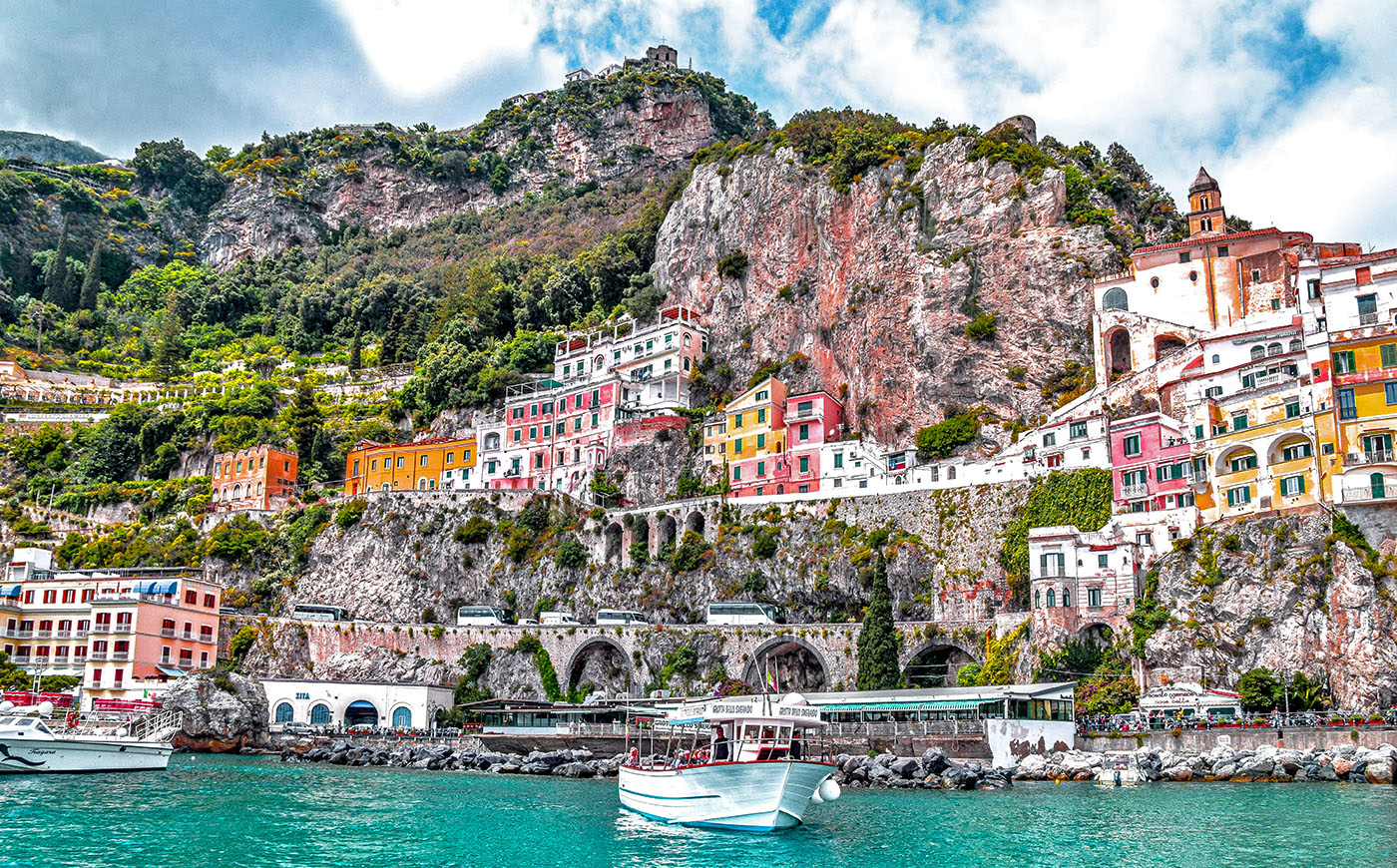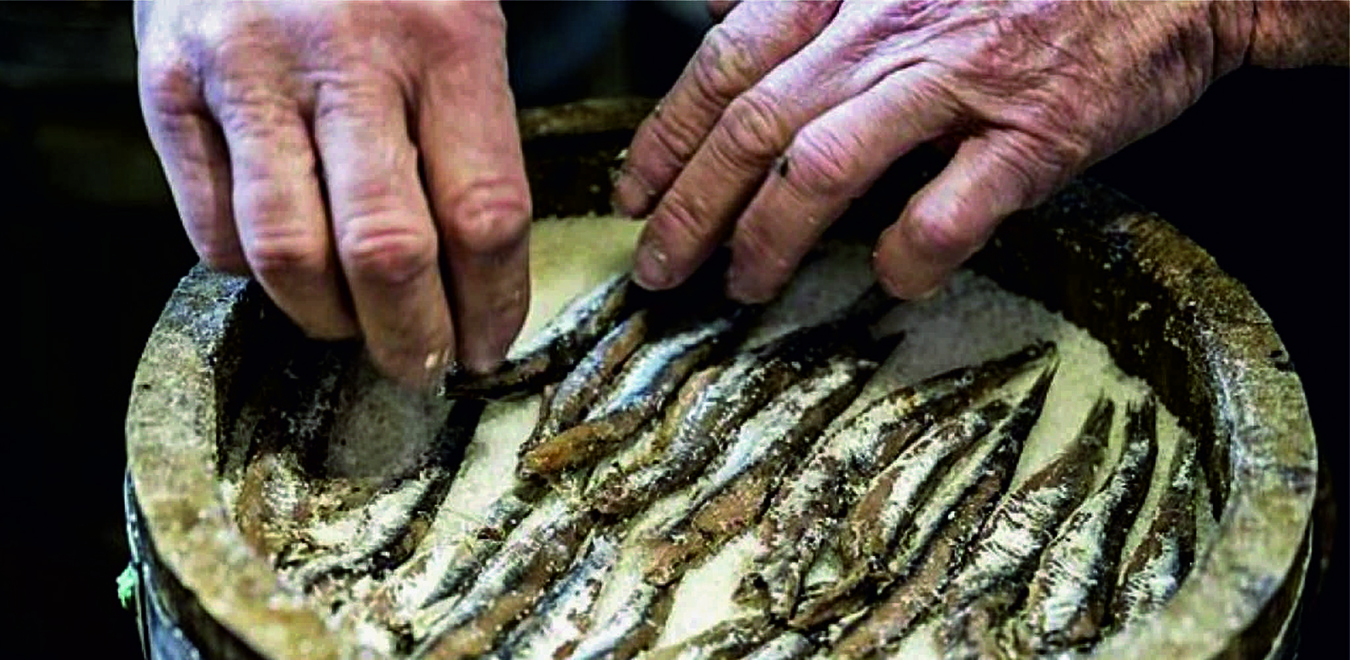
Glimpse of Amalfi, in the province of Salerno. Between the 9th and 11th centuries, it was the seat of a powerful maritime republic.
PUBLISHED JUNE 11, 2021 | BY GIORGIO IMPERATO | 5 MINUTES READ
*This story appears on May-June 2021 Terre & Culture magazine issue, in the section Food & Friends.
For the uninitiated it is just a very strange anchovy extract, with which to season spaghetti "garlic and oil". But for connoisseurs it is much more. It is a precious liquid, and difficult to extract as well as having historical references of over two thousand years. Until about ten years ago it was reserved for a few, for the “Cetaresi” inhabitants of an ancient fishing village from which the name derives, on the Amalfi coast, and for a small circle of friends and acquaintances, to whom it was offered in very small doses so that they abused and considered their value (as recalled by the Boccaccio novel by Cisti the baker, who teaches how in the gift of exquisite things, in order not to debase them, you cannot exceed in quantity).
The production of colatura is not simple: starting from the raw material, which is anchovies or anchovies ("engraulis-encrasicholus") fished with the "Cianciolo" or "Lampara" technique - and, I would add, even better with the technique unfortunately no longer in use of the "Menaida" - exclusively in the Gulf of Salerno in the spring period, from the end of March to the end of July. In this period, in fact, due to the particular conditions of the waters of the gulf and the phase of the life cycle of the fish, anchovies have a low fat content and are particularly suitable for the salting process. At this point, in the traditional production cycle of the classic anchovy colatura the necessary presence of the "terzigno" is inserted - neither more nor less like the oak barrel in the production of quality wine: a wooden container originally obtained from the partial reuse of old barrels that had become unusable for the transport of water or wine, were sawn into three parts. Eliminated the central part (rendered useless by the presence of the pouring hole), the two ends (called "terzigni" or "terzaruli" precisely because they constituted the third part of the barrel) were reused as buckets and generally as containers of liquids. The anchovies, freshly caught, are, by hand, deprived of the head and cleaned of the entrails ("scapezzate"), and then placed, with the classic head-tail technique, in alternate layers of salt and anchovies, in the container above. described Once the layers have been completed, the terzigno is covered by a wooden disc ("tumpagno") subjected to light pressure by means of a stone placed on it.
Anchovy salting process
The liquid, which due to the effect of pressure and maturation begins to emerge on the surface, is collected from time to time in another container and exposed to the sun, where it undergoes the double effect of maturation and concentration (thanks to partial evaporation).
At the end of the ripening process of the anchovies left in the "terzigno", which takes four or five months, and therefore between the end of October and the beginning of November, everything is ready for the last phase of the preparation of the colatura: the liquid collected in the other container, matured and "concentrated" by the action of the sun, is again poured into the terzigno, and, by completely crossing the various layers (and thus absorbing the best of its organoleptic qualities), it finally reaches the bottom. Here, through a hole made with the awl (“vriala”), the liquid drips drop by drop into another container placed under the terzigno. The final result is a clear amber-colored distillate (almost mahogany brown), with a strong and full-bodied flavor: an exceptional reserve of flavor that preserves the aroma of the raw material (salted anchovies) intact, capable of flavoring dishes with a few drops. simple local cuisine, from vegetables (classic “Christmas broccoloni”) to spaghetti.
One of the best drippings on the coast began to be produced in Cetara.
When the pasta makers from Minori, Atrani and Amalfi began to produce long hand-made spaghetti, the two elements were combined and the spaghetti was prepared with colatura.
A dish with a particular taste that was traditionally eaten on Christmas Eve in all coastal families. Today this dish is a refined and refined element of the local gastronomy, presented in the most renowned restaurants of the coast. The preparation is very simple, it is placed in a bowl of olive oil with chopped garlic, parsley, chilli pepper if desired and a few spoonfuls of colatura are added to it in the measure of one for each guest. Cook the spaghetti al dente, drain and add to the prepared sauce and serve hot.